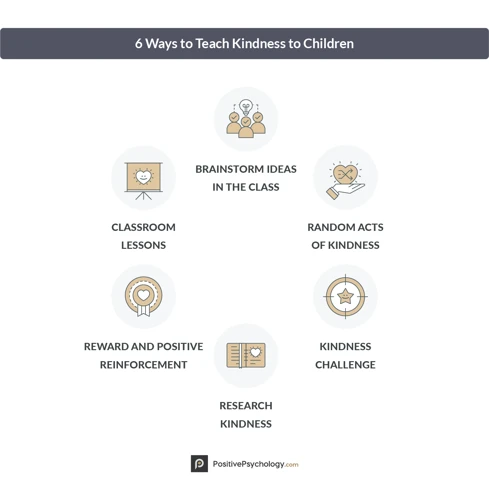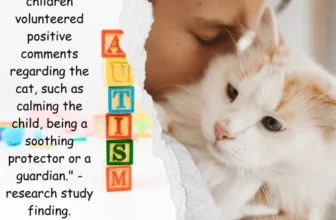As children grow, they need more than just academic knowledge to become well-rounded individuals. Teaching them empathy, compassion, and responsibility towards animals is a great way to instill positive values. One fascinating animal that can teach children compassion and kindness is the California Spangled Cat. These cats are known for their beauty, intelligence, and playful nature. However, like any animal, they require care and compassion. In this article, we’ll take a look at some ways to teach children to be kind to California Spangled Cats. From modeling kindness to understanding these cats’ unique needs, we’ll cover everything parents and caregivers need to know.
Teaching Empathy and Compassion

Understanding and practicing empathy and compassion is an essential part of teaching children to care for and respect animals. It is important to not only model kind behavior but also take the time to teach children about animal emotions and encourage positive interactions with animals. Teaching these skills can be especially important when it comes to introducing children to California Spangled cats, a unique and beautiful breed. To ensure the safety and well-being of both children and cats, it is important to provide proper training and guidance. To learn more about teaching children to be kind to California Spangled cats, consider these helpful tips and resources. For information on child safety and California Spangled cats, visit California Spangled Cats and Child Safety Tips.
Modeling Kindness
Teaching children to be kind to California Spangled Cats starts with modeling kindness. Children are observant and often imitate what they see in their parents, caregivers, and other adults. Parents must model kind and respectful behavior towards all animals, especially California Spangled Cats. Here are some ways parents can model kindness:
- Show affection towards the cat: Parents can pet, play, and cuddle with the California Spangled Cat in front of their children to show them how to interact positively with the cat.
- Avoid punishment: Parents must refrain from punishing the cat in front of their children as it can instill fear and distress in the cat. Parents can instead redirect the cat’s behavior by using positive reinforcement.
- Be patient: Children need to learn that animals have their own pace, and not all cats are comfortable around people right from the start. Parents can teach children to be patient and let the cat come to them in their own time.
- Teach respect: Parents can teach children to respect the cat’s boundaries and not force them to do anything they’re uncomfortable with. Children can learn to read the cat’s body language and respond accordingly.
Remember, modeling kindness is an essential step in teaching children how to be kind to California Spangled Cats. By demonstrating respect, affection, and patience towards the cat, children will learn to treat all animals with compassion and empathy.
For more information about teaching children responsible pet ownership, check out teaching kids responsible pet ownership for California Spangled Cats.
Teaching Animal Emotions
Teaching children to recognize and understand animal emotions is an essential aspect of teaching kindness to California Spangled Cats. Children need to understand that animals, just like humans, have feelings and emotions, and it’s crucial to respect and care for them just as we would for other people. Here are some ways parents can teach their children about animal emotions:
- Start by talking about emotions: Parents can start by discussing human emotions like happiness, sadness, fear, and anger and how people feel when experiencing these emotions. This conversation can then move towards discussing animal emotions and how we can recognize them in California Spangled Cats.
- Show pictures and videos: Parents can show pictures and videos of California Spangled Cats exhibiting various emotions, such as their body language when they are happy, scared, or angry. Parents can then explain the behavior and the message that the cats are communicating.
- Narrate stories: Parents can read stories to their children about animals and their emotions. For example, a story about a California Spangled Cat that is afraid of water and how her owner helped her overcome her fear can teach children about overcoming fears and how animals can feel fear just like we do.
- Encourage empathy: Encouraging children to put themselves in the shoes of California Spangled Cats and understand how they would feel in certain situations is an excellent way to foster empathy and compassion in children. Empathy helps children understand animal emotions and how their actions can affect the cats emotionally.
- Teach through play: Children learn better through play, so parents can use games like “what’s my cat feeling?” where children guess the emotions their cat is exhibiting through body language, vocalizations, and other cues.
Teaching animal emotions goes a long way in helping children understand the importance of treating California Spangled Cats and all other animals with kindness and respect. It helps to develop a sense of empathy in children that will serve them well as they grow up. Parents can find more helpful information on teaching children to be kind to California Spangled Cats by visiting this link.
Encouraging Positive Interactions
When teaching children to be kind to California Spangled Cats, it’s important to encourage positive interactions between the child and the cat. This can help foster a sense of trust and respect between the two, which is essential for a happy and healthy relationship.
Here are some tips on encouraging positive interactions:
- Teach children to approach the cat slowly and calmly, speaking softly to them as they approach.
- Show children how to properly pet and play with the cat, using gentle strokes and refraining from pulling on their tail or ears.
- Encourage children to play with the cat using interactive toys, such as cat wands or laser pointers. However, make sure to supervise playtime closely to ensure the safety of both the child and the cat.
- Teach children to read the cat’s body language, so they can understand when the cat is feeling happy and content, and when they would prefer to be left alone.
- Model appropriate behavior around the cat, treating them with kindness and respect. Children often learn by example, so make sure you’re setting a good one.
By encouraging positive interactions, you can help create a loving and trusting relationship between your child and your California Spangled Cat. This can help build important social skills in your child, such as empathy and compassion, that can help them navigate the world with kindness and understanding.
If you’d like to learn more about the emotional development of California Spangled Cats, be sure to check out our article on California Spangled Cat Emotional Development. And for more tips on raising children with California Spangled Cats, check out our article on How to Raise Kids with California Spangled Cats.
Teaching Responsibility

Taking care of pets is a big responsibility that all children must learn at some point in their lives. Teaching children to be responsible for a pet helps them develop important life skills such as patience, discipline, and empathy. When it comes to California Spangled Cats, they require special care and handling. It’s important for parents to teach their children how to properly take care of these unique felines to ensure their safety and well-being. Let’s explore some effective ways to teach responsibility so that your child can provide the best care for your California Spangled Cat. Before we dive into the details, make sure to check out our child safety tips in our California Spangled Cat Introduction article to ensure your child is safe around these playful creatures.
Teaching Safe Handling
Teaching children how to properly handle California Spangled cats is an essential part of teaching responsibility. It is important for children to understand how to hold and touch cats in a way that is safe for both the cat and the child. Here are some tips on safe handling:
| Tip | Description |
|---|---|
| Washing Hands | Have children wash their hands before and after handling California Spangled cats to avoid spreading germs from one cat to another. |
| Hold Gently | Show children how to hold a cat gently but securely. It’s important not to squeeze or hold too tight as this can cause discomfort and injury to the cat. |
| Noisy Surroundings | Teach children to be careful when handling California Spangled cats in noisy surroundings as loud noises can frighten them and cause them to scratch or bite. |
| Scratching Posts | Get children to train their California Spangled cat on using a scratching post. This will protect furniture from damage and will prevent children from inappropriate physical discipline unconfident behavior from the cat. |
| Supervised Play | Children should be supervised while playing with California Spangled cats. Playing too roughly with them can cause injury, but gentle play can be a lot of fun for children the cat. |
It is important to remind children that respect for California Spangled cats is crucial for a healthy and trusting relationship. If you’re looking for more ideas on how to entertain kids with California Spangled cats, check out our article on California Spangled Cats Entertain Kids.
Teaching Feeding and Caregiving
No problem, here’s an informative segment about teaching children to properly feed and care for California Spangled Cats:
Feeding:
- Explain that California Spangled Cats have specific dietary needs and it’s important to feed them the right kind of food.
- Show them the ingredients list on the food you give your own cat and explain why those ingredients are good for their health.
- Demonstrate how to measure out the correct amount of food for the cat’s size and age.
- Provide examples of healthy treats that can be given to the cat in moderation.
Caregiving:
- Show the child how to safely hold the cat, and emphasize the importance of always supporting their body.
- Explain how to groom the cat properly, including brushing their fur and trimming their nails.
- Model how to clean out the cat’s litter box and explain why keeping it clean is important for both the cat’s health and the house’s cleanliness.
- Teach the child to recognize signs of distress or illness in the cat and to know when it’s important to take them to the veterinarian.
By teaching children how to properly feed and care for their California Spangled Cat, they are learning valuable life skills such as responsibility and empathy. It’s important to emphasize the importance of treating animals with care and respect, and to instill a love for all creatures in young minds.
Teaching Awareness
As individuals, we carry certain responsibilities towards all creatures we share this planet with. Teaching our children to respect and care for all animals is crucial for instilling empathy, compassion, and awareness in their character. In this section, we will explore ways to raise awareness about California Spangled Cats and other feline species and teach children to appreciate the diversity and wonder of the animal kingdom. Let’s delve into it with an open mind and willingness to learn.
Understanding California Spangled Cats
To teach children how to be kind to California Spangled Cats, it is important to first understand their nature and characteristics. California Spangled Cats are a unique breed with distinctive traits that set them apart from other domesticated cats. Here are some characteristics and facts about this impressive feline breed that will help to create a better understanding of them:
| Characteristics | Description |
| Appearance | California Spangled Cats have a wild and exotic appearance with their muscular build, short hair, and spotted coat. |
| Size | These cats are medium to large in size, with males weighing up to 15 pounds and females weighing up to 10 pounds. |
| Personality | California Spangled Cats are known for being intelligent, affectionate, and active. They enjoy playing and socializing with humans and other cats. |
| Origins | This breed was created in the 1980s by an American wildlife conservationist who was inspired by the beauty of wild cats. The California Spangled Cat has been described as the domesticated version of the leopard. |
Understanding the background and nature of California Spangled Cats can help children appreciate these feline creatures more fully. This knowledge can also inspire children to respect and care for them with compassion and empathy.
Teaching Animal Welfare
When teaching children to be kind to California Spangled cats, it is important to also teach them about animal welfare. This includes understanding the basic needs of cats, as well as the impact of human behavior on their wellbeing. Here are some ways to teach children about animal welfare:
| Activity | Description |
|---|---|
| Visit an Animal Shelter | Take children to a local animal shelter to see firsthand the importance of caring for animals and the consequences of neglect or mistreatment. |
| Discuss Animal Rights | Have an open conversation with children about the importance of treating animals with kindness and respect, emphasizing that they too have feelings and basic needs. |
| Volunteer at a Pet Rescue | Encourage children to volunteer at a local pet rescue or animal shelter, where they can learn about the challenges of animal care and gain hands-on experience with animals. |
| Learn About Sustainable Practices | Teach children about sustainable environmental practices and how it affects the lives of California Spangled cats and other animals. |
| Support Animal Welfare Organizations | Show children the importance of supporting animal welfare organizations and teach them how they can help, whether it be through time, money, or donations. |
Teaching animal welfare is an important part of raising kind and empathetic children. By giving children the knowledge and tools to care for animals, we can ensure a better future for California Spangled cats and other animals in need.
Teaching Appreciation of Diversity
One aspect of teaching children to be kind to California Spangled Cats is to help them appreciate and respect diversity. Here are some ways to achieve this:
- Expose children to different cat breeds: To help children understand that California Spangled Cats are not the only type of cats, introduce them to other cat breeds. Show them pictures of different breeds, take them to a shelter to see different cats in person, or attend a cat show together.
- Teach children about the history and characteristics of different cat breeds: Learning about the history and characteristics of different cat breeds can help children understand and appreciate the diversity within the world of cats.
- Encourage children to celebrate differences: Teach children that just like humans, cats come in all shapes, sizes, colors, and personalities. Encourage them to celebrate these differences and see them as a positive aspect of our world.
- Discuss prejudice and discrimination: Use the example of how cats can be discriminated against based on breed or appearance to have a conversation about prejudice and discrimination in our society. Help children understand the negative consequences of judging or mistreating someone based on superficial traits.
By teaching children to appreciate and celebrate diversity in all its forms, we can help create a more kind and inclusive world, not just for California Spangled Cats, but for all beings.
Conclusion
In conclusion, teaching children to be kind to California Spangled Cats is a valuable lesson that can promote empathy, responsibility, and awareness. By modeling kindness, teaching animal emotions, encouraging positive interactions, and teaching safe handling, feeding, and caregiving, children can develop a deeper understanding and appreciation of these unique and lovable cats.
Furthermore, teaching children about animal welfare and the importance of respecting diversity can help cultivate a sense of compassion and responsibility that can extend beyond interactions with cats and other animals. This, in turn, can help promote a more caring and empathetic society.
As parents, caregivers, and educators, it is important to prioritize teaching these valuable lessons to children. By instilling these values from a young age, we can help children become more compassionate and conscientious members of society. Let us all strive towards building a more empathetic and kind world, one California Spangled Cat at a time.
Frequently Asked Questions
How can teaching children to be kind to California spangled cats lead to benefits for both the children and the cats?
Teaching children to be kind to California spangled cats can lead to children developing empathy, compassion, and responsibility. Additionally, kind treatment towards cats can help improve their well-being and reduce the risk of behavior problems.
What are some examples of ways that parents can model kindness towards California spangled cats for their children?
Parents can model kindness towards California spangled cats by showing affection, using positive reinforcement, and avoiding punishment. Parents should also ensure their children are not using language or actions that can be harmful to animals.
What can parents do to teach their children about animal emotions?
Parents should emphasize the idea that animals can experience emotions by talking to their children about how California spangled cats may feel happy, scared, or sad in different situations. They can also encourage children to observe body language and listen for vocalizations that indicate a cat’s emotional state.
What are some techniques that can be used to encourage positive interactions between children and California spangled cats?
Parents can encourage positive interactions by teaching children how to approach cats safely and showing them how to play with toys or provide treats. Children should also be taught to avoid handling a cat too roughly and to respect any signs of discomfort or aggression.
What are some tips for teaching safe handling of California spangled cats?
Parents should teach children to handle California spangled cats gently and properly support their bodies with both hands. They should also avoid pulling or yanking on any body parts and never pick up a cat by the tail or ears.
What are some things children can learn about feeding and caregiving of California spangled cats?
Children can learn about feeding and caregiving by observing their parents and being taught about proper feeding schedules, amount of food, and types of food. They should also be taught how to clean litter boxes and how to properly groom the cat.
What is unique about the California spangled cat breed?
The California spangled cat is unique because it was bred to resemble wildcats found in nature. They are known for their distinct spotted coat and athletic personality. They are also a rare and endangered breed today.
How can teaching children about animal welfare benefit their development and future relationships?
Teaching children about animal welfare can help them develop a sense of empathy, compassion, and responsibility. This can also lead to them developing positive relationships with animals throughout their lives.
What are some ways that parents can teach their children to appreciate diversity through their interactions with California spangled cats?
Parents can teach children about appreciation of diversity by discussing how California spangled cats come in different colors, coat patterns, and personalities. This can help children learn to appreciate and celebrate differences in people and animals.
Why is it important for children to learn about being kind to animals?
Teaching children to be kind to animals is important because it helps them develop empathy, compassion, and a sense of responsibility towards living beings that may be more vulnerable than they are. It can also promote a positive relationship between children and animals, which can have long-lasting benefits for both.







